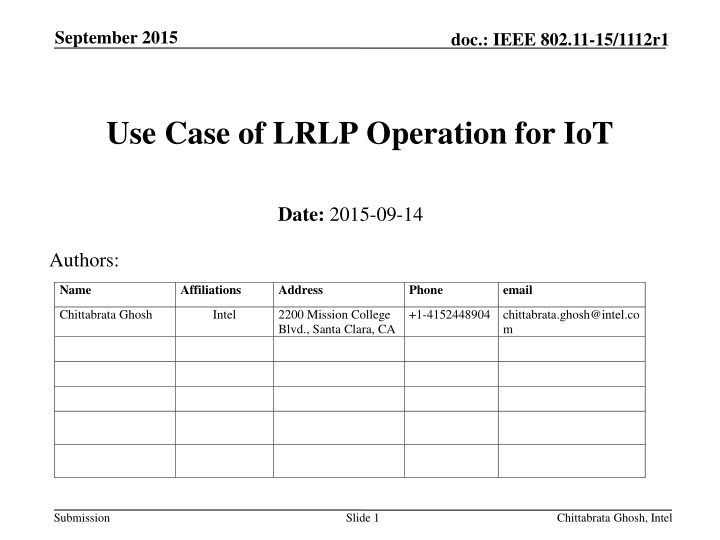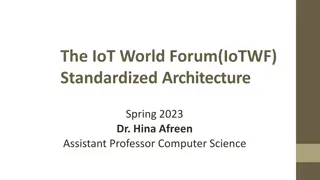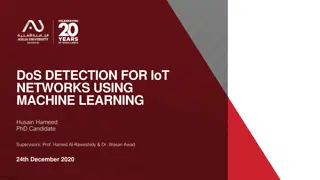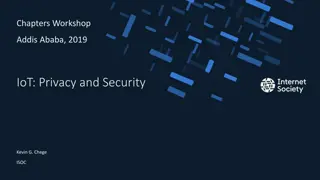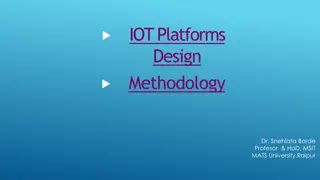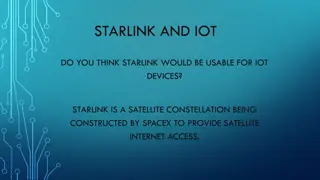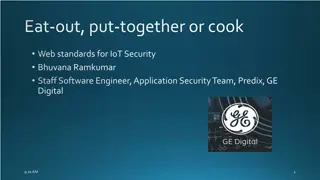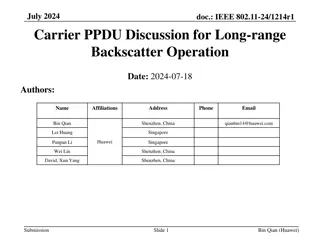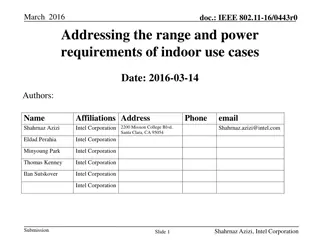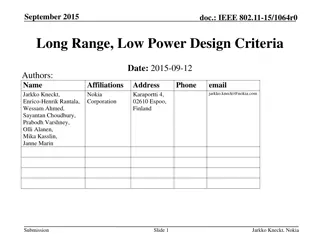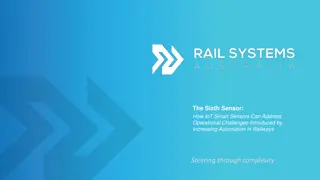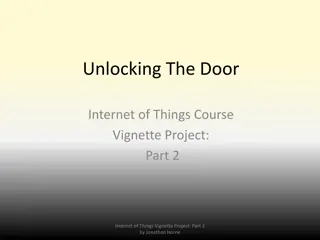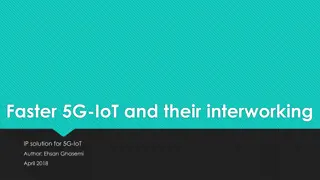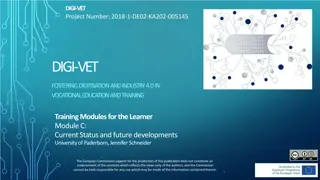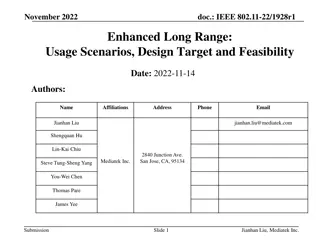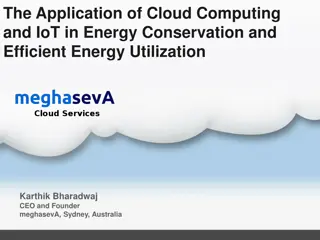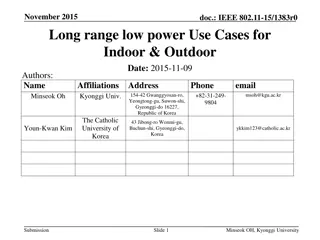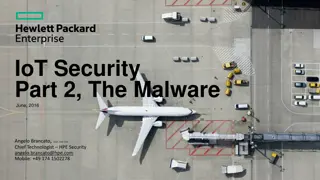IoT Use Case - Long Range Low Power Operation for Building Energy Management
This document outlines the use case of Long Range Low Power (LRLP) operation for Internet of Things (IoT), focusing on building energy management systems. It details how IoT-enabled HVAC systems in multi-storied homes can be remotely controlled to maintain optimal temperature, energy efficiency, and reliability. The integration of LRLP technology allows for longer range operation, lower power consumption, and seamless interoperability within existing networks. The use case involves temperature sensors, IoT gateways, cloud analytics, and automated corrective actions to enhance building energy efficiency.
Download Presentation

Please find below an Image/Link to download the presentation.
The content on the website is provided AS IS for your information and personal use only. It may not be sold, licensed, or shared on other websites without obtaining consent from the author.If you encounter any issues during the download, it is possible that the publisher has removed the file from their server.
You are allowed to download the files provided on this website for personal or commercial use, subject to the condition that they are used lawfully. All files are the property of their respective owners.
The content on the website is provided AS IS for your information and personal use only. It may not be sold, licensed, or shared on other websites without obtaining consent from the author.
E N D
Presentation Transcript
September 2015 doc.: IEEE 802.11-15/1112r1 Use Case of LRLP Operation for IoT Date: 2015-09-14 Authors: Name Affiliations Address Phone email Chittabrata Ghosh Intel 2200 Mission College Blvd., Santa Clara, CA +1-4152448904 chittabrata.ghosh@intel.co m Submission Slide 1 Chittabrata Ghosh, Intel
September 2015 doc.: IEEE 802.11-15/1112r1 Contents of this Contribution Introduction to LRLP Use Case I: Building Energy Management System Metrics for LRLP Submission Slide 2 Chittabrata Ghosh, Intel
September 2015 doc.: IEEE 802.11-15/1112r1 Long Range Low Power Operation Longer Range operation In mainstream 802.11 Lower Power operation Enable battery powered IoT Integrated with mainstream networks Interoperable in mixed BSS case Integrated with mainstream products Negligible incremental cost for implementation at an AP Acceptable to have a specialized low-cost silicon for LRLP STA, but the AP should be based on standard silicon. Intended for M2M managed impact on existing network Medium Occupancy Limit, average occupancy limit Other mechanisms as appropriate Submission Slide 3 Chittabrata Ghosh, Intel
September 2015 doc.: IEEE 802.11-15/1112r1 Use Case I: Building Energy Management Systems (BEMS) User: Owner of a multi-storied home remotely sets a dynamic temperature threshold for rooms in each floor from his office and the IoT-enabled HVACs operate to maintain desired temperature, energy efficiency, and reliability Environment: The multi-storied home consists of an HVAC (heating, ventilation, and air conditioning) unit with embedded temperature sensors and also temperature sensors in each room. These sensors remotely monitor and control installed HVACs within buildings. The sensors connect to the IoT Gateway that deliver data directly to the cloud or local data center. The cloud analyzes the collected data, as well as external data, such as weather data or grid signals, and implements changes to improve efficiency, comfort. The IoT network enhances the control and automation of HVACs installed in buildings and homes. Use Case: 1. Temperature sensors within a room report data at periodic intervals to the IoT Gateway from where the data is entered into a database. 2. The sensors embedded in an HVAC are connected and controlled directly to the IoT Gateway. These sensors do not communicate with the temperature sensors in rooms of a building. 3. Temperature sensors send alarms when the temperature exceeds a pre-defined threshold (set by the owner). The alarm is then relayed by the IoT Gateway to the HVAC through the embedded sensors. 4. The IoT Gateway utilizes data from traditional automation systems, smart meter internal electricity consumption in order to analyze the alarm communicated by temperature sensors 5. The HVAC takes appropriate corrective action by changing the temperature of the specific room from which the alarm was raised by temperature sensors Submission Chittabrata Ghosh, Intel
September 2015 doc.: IEEE 802.11-15/1112r1 Metrics for LRLP Data transmission rate: Lowdata throughput typical of applications in sensor or actuator networks, e.g., 100kbps of limited size file transfer Transmission range: Narrow bandwidth is a key solution to achieve increase transmission range, given a fixed transmit power Peak power consumption: This metric controls the power consumption during activity periods in specified duty cycle of LRLP operation Average current consumption: Battery life time is inversely related to this metric and is measured in mA Lower average current consumption for a fixed battery capacity improves battery life time Battery capacity: Battery life time is directly related to this metric and is measured in mAh (mA hours) Dependent on rate of discharging the battery (e.g., 230-240mAh at 500uA rate of discharge, while 150mAh at 3mA rate of discharge) [1] Dependent on pulse duration (ON time of an LRLP device) Submission Slide 5 Chittabrata Ghosh, Intel
September 2015 doc.: IEEE 802.11-15/1112r1 Summary We have presented an use case for LRLP operation with IoT devices in a smart building Submission Slide 6 Chittabrata Ghosh, Intel
September 2015 doc.: IEEE 802.11-15/1112r1 References [1] IEEE 11-15/0775r1: Integrated Long Range Low Power Operation for IoT Submission Slide 7 Chittabrata Ghosh, Intel
